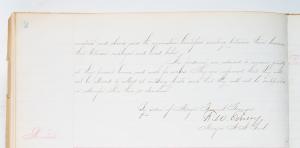“All Slaves Are Free”: General Granger’s Juneteenth Order
159 years ago today, Union Major General Gordon Granger issued General Orders No. 3, leading to what is now widely known as Juneteenth.
Granger’s order was largely symbolic. The “equality of rights” described in the order went beyond what Lincoln had included in the Emancipation Proclamation. He also clearly exceeded what Granger could realistically enforce with a few thousand troops across the vast state of Texas, which was just one sparsely populated corner of the broad swaths of the country that had trafficked in human property.
No one moment or document could ever perfectly encapsulate the complex, years-long road to emancipation. But symbols matter. And so it feels fitting to take a few minutes today to read a document that, for so many, represented newfound freedom:
Headquarters District of Texas
Galveston Texas June 19 1865General Orders
No. 3The people of Texas are informed that in accordance with a Proclamation from the Executive of the United States, “all slaves are free”. This involves an absolute equality of personal rights and rights of property between former masters and slaves and the connection heretofore existing between them becomes that between employer and hired labor.
The freedmen are advised to remain quietly at their present homes, and work for wages. They are informed that they will not be allowed to collect at military posts and that they will not be supported in idleness either there or elsewhere.
By order of Major General Granger
F.W. Emery
Maj. A.A. Genl.

